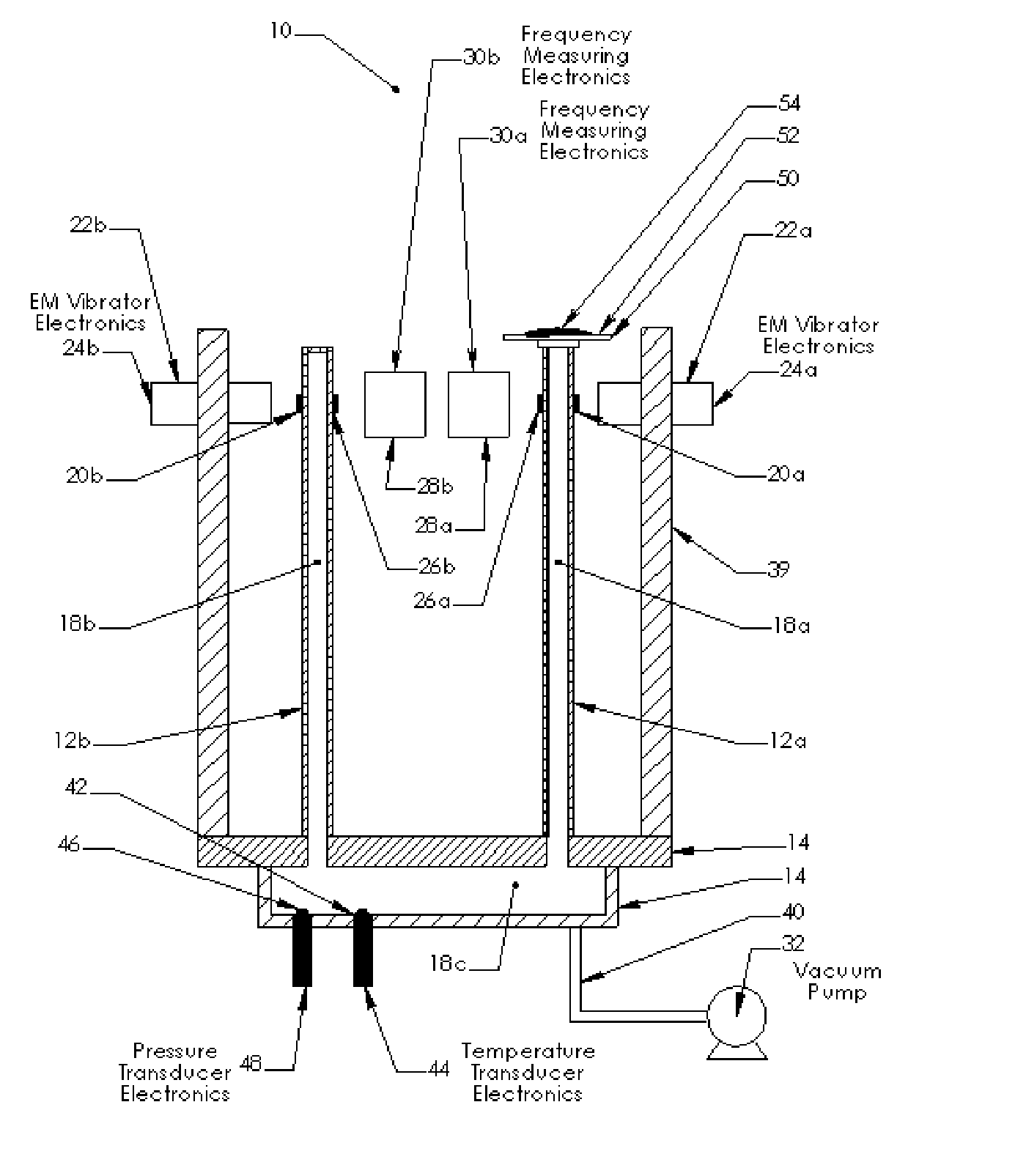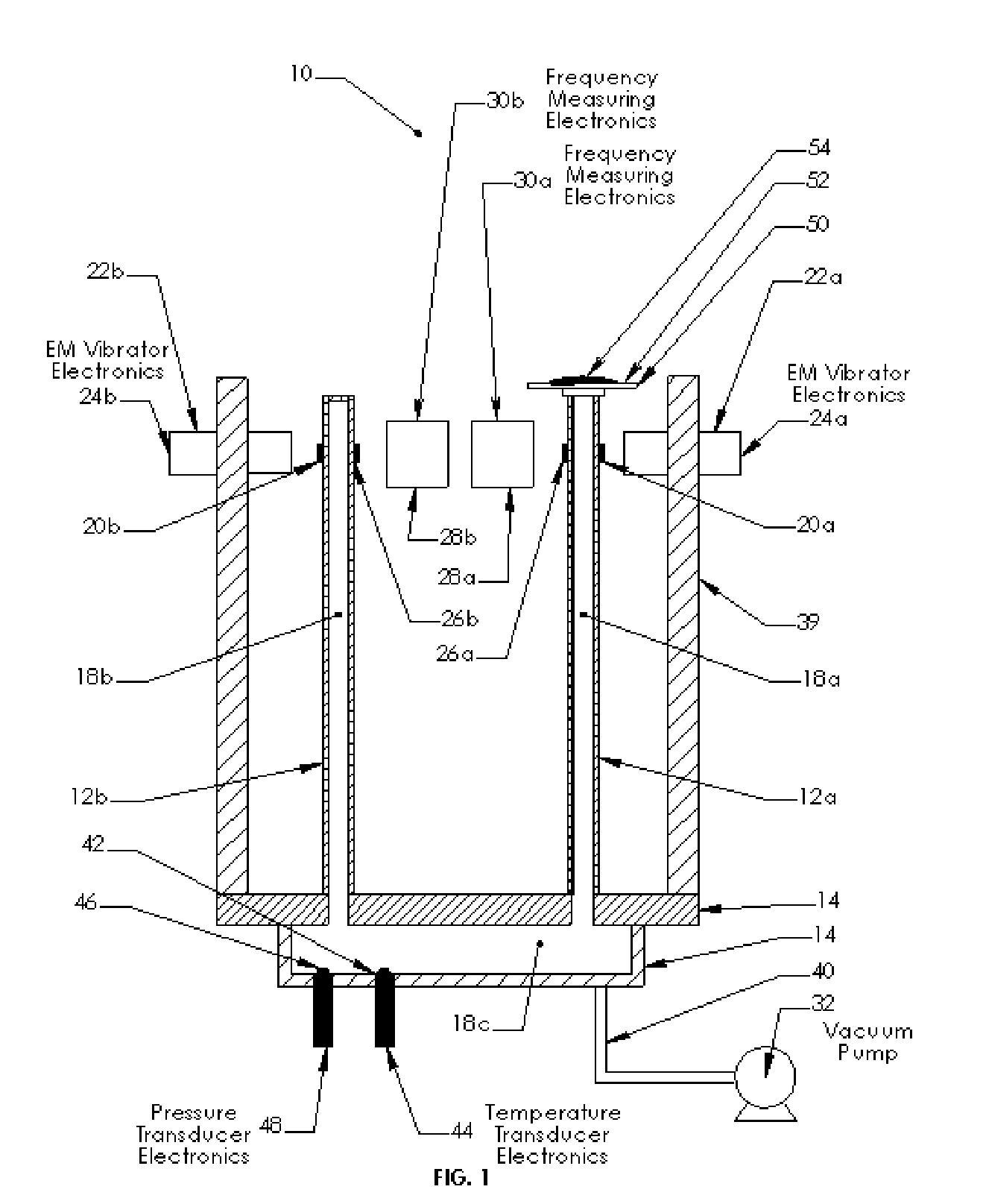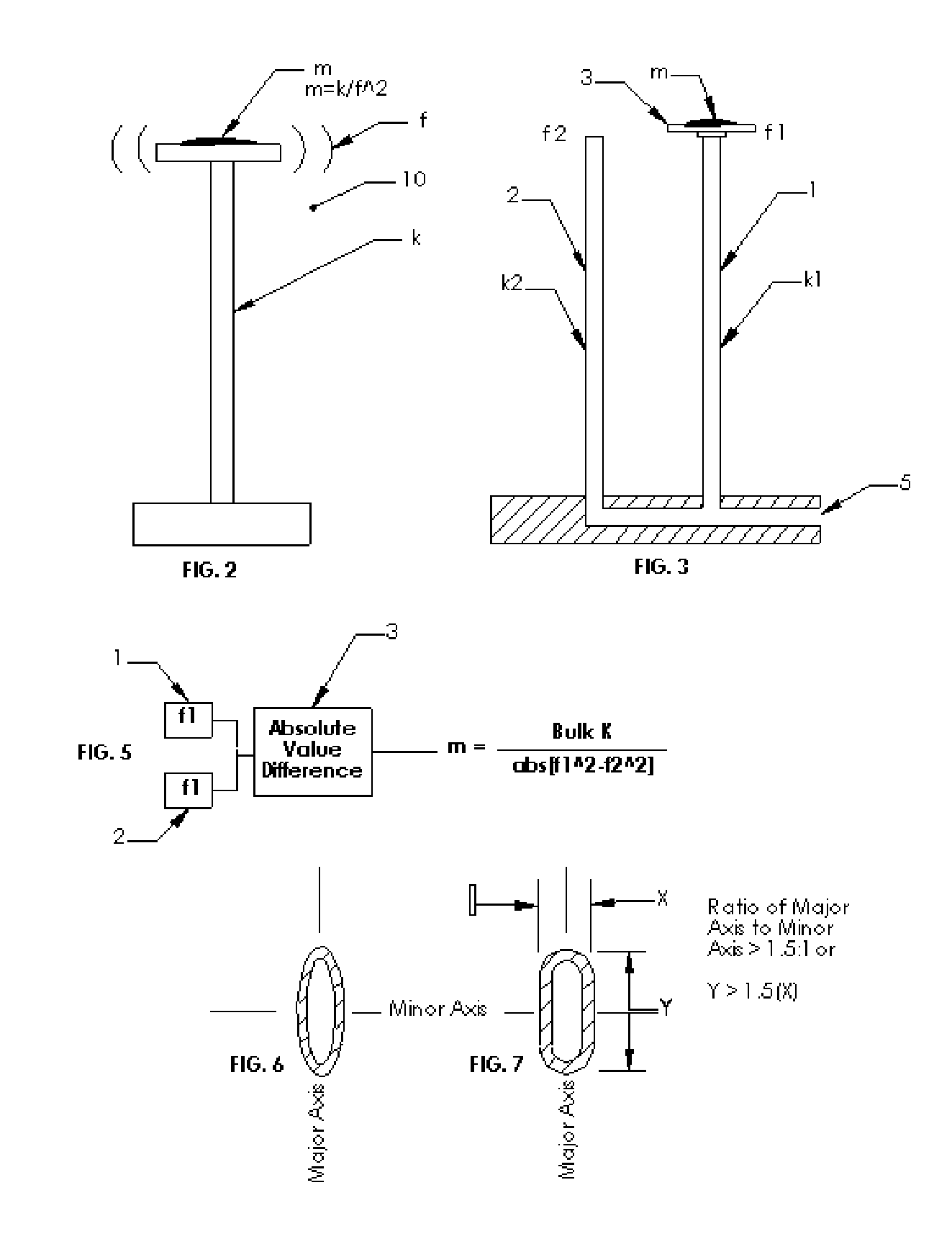Oscillating Inertial Microbalance and Method of Passive Compensation
a technology of inertial microbalance and mass measurement device, which is applied in the direction of material analysis using wave/particle radiation, instruments, specific gravity measurement, etc., can solve the problems of difficult to precisely determine the application of temperature correction, the mass measurement of material deposited on the oscillating inertial microbalance may be adversely affected, and the instrument used to measure a particular parameter may be affected by the variation of other parameters. , to achieve the effect of minimizing energy transfer and minimizing
- Summary
- Abstract
- Description
- Claims
- Application Information
AI Technical Summary
Benefits of technology
Problems solved by technology
Method used
Image
Examples
Embodiment Construction
[0041] The present invention provides for a passive method and apparatus which overcomes problems found in the prior art.
[0042] In several embodiments of the present invention there is no need to utilize complex methods and or formulae for the heat treatment of the oscillating element as illustrated in U.S. Pat. No. 6,080,939. Additionally, schemes such as those in U.S. Pat. No. 6,080,939 sport elastic oscillating elements with “low” thermoelastic coefficients that are not sufficiently “low” enough to support the accuracy and resolution requirements of the subject invention. It is therefore important to select a material that exhibits low losses of energy per unit oscillation. Such systems are said to have a “High Q”, and provide for a passive means of removing the effects of a non zero thermoelastic coefficient.
[0043] The present invention significantly reduces the temperature sensitivity by utilizing a differential mode wherein two or more resonators are utilized and only one is...
PUM
| Property | Measurement | Unit |
|---|---|---|
| frequency | aaaaa | aaaaa |
| frequency | aaaaa | aaaaa |
| frequency | aaaaa | aaaaa |
Abstract
Description
Claims
Application Information
 Login to View More
Login to View More - R&D
- Intellectual Property
- Life Sciences
- Materials
- Tech Scout
- Unparalleled Data Quality
- Higher Quality Content
- 60% Fewer Hallucinations
Browse by: Latest US Patents, China's latest patents, Technical Efficacy Thesaurus, Application Domain, Technology Topic, Popular Technical Reports.
© 2025 PatSnap. All rights reserved.Legal|Privacy policy|Modern Slavery Act Transparency Statement|Sitemap|About US| Contact US: help@patsnap.com



